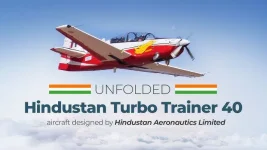- Views: 2K
- Replies: 35

BENGALURU, INDIA – India's ambitious Intermediate Jet Trainer (IJT) program, a cornerstone of Hindustan Aeronautics Limited's (HAL) development portfolio, shows renewed promise.
According to sources with knowledge of the project, the IJT could soon enter production after significant design changes and extensive system upgrades.
Extensive Overhaul Addresses Performance Concerns
The IJT program, a critical step in modernizing the Indian Air Force's (IAF) training fleet, is on track to complete developmental trials following a major redesign.Significant modifications include a redesigned tail section, addressing problematic stall and spin characteristics, and vital upgrades to avionics systems. These changes aim to rectify crucial issues that had plagued the aircraft since its initial development.
Overcoming Past Setbacks
From 2016 to 2019, the IJT program was grounded due to safety concerns. A significant challenge was the aircraft's inability to perform six-turn spins in each direction, an essential maneuver for pilot training.This limitation led to the comprehensive redesign and subsequent re-testing. Nearly 200 sorties over the past five years have been dedicated to validating the modifications and ensuring the aircraft's revised systems perform safely and effectively.
Replacing an Aging Fleet
The successful development of the IJT is imperative for the IAF. It will serve as the replacement for the country's aging Kiran Mk I and Mk II trainers, which are nearing retirement by 2025.A modernized fleet of IJTs offers a crucial platform for the IAF to train pilots on advanced systems, preparing them for the rigors of modern aerial combat.
A Milestone for Indigenous Development
The IJT program has faced numerous delays and setbacks throughout its prolonged development.If the redesigned IJT successfully completes its trials and enters production, it will represent a landmark achievement for India's indigenous defense manufacturing capabilities.

